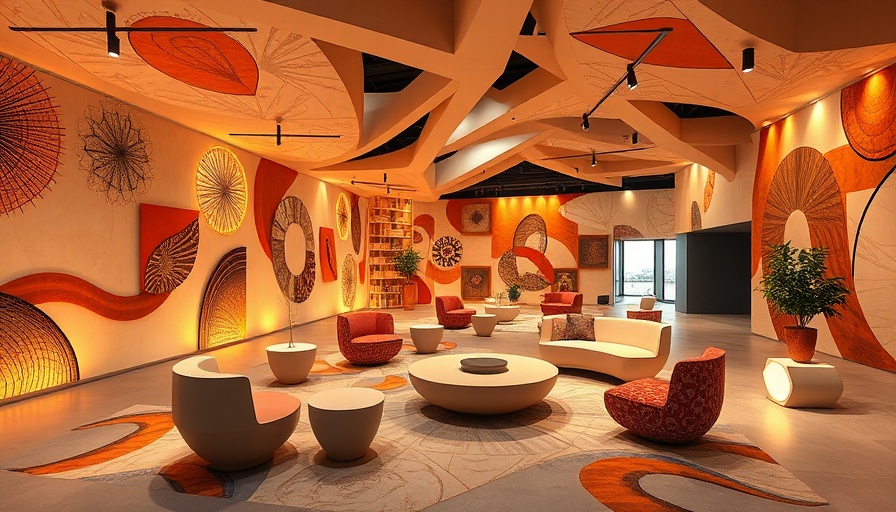
Transforming a Blighted Space into a Community Gem
The renovation of a derelict pavilion in Mexico City by AMASA Estudio is not just about restoring an architectural structure; it’s about revitalizing a community. This restoration project, situated within a social housing block known as Infonavit, transcends simple aesthetics—it's a beacon of hope for residents to gather, socialize, and rediscover the importance of public spaces in urban life.
Rethinking Public Spaces in Housing Developments
Public spaces often fall victim to neglect, particularly in underserved communities. AMASA Estudio’s decision to rehabilitate the pavilion is an illustration of how thoughtful redesign can lead to renewed social connections. Instead of merely a structure, the pavilion is envisioned as a catalyst for community engagement and cohesion. Providing a welcoming area encourages families to come together, potentially bridging gaps between neighbors, a necessity in densely populated environments.
Architectural Excellence: The Vision Behind the Pavilion
AMASA Estudio’s approach highlights sustainable practices, emphasizing materials that reflect and respect the locality’s culture. The pavilion’s design incorporates elements reminiscent of traditional Mexican architecture while introducing contemporary touches, creating a relatable yet innovative atmosphere. This melding of old and new serves as an artistic homage to the community’s heritage.
The Broader Impact of Well-Designed Community Spaces
Research indicates the importance of well-designed public spaces in enhancing community livability and satisfaction. As noted in various studies, attractive communal areas can significantly impact mental well-being and foster community pride. The pavilion's transformation signifies a recognition of these findings, providing a renewed incentive for residents to engage positively with their environment.
Counterarguments: What’s Missing in Urban Design?
While AMASA Estudio’s project is commendable, some critics argue that isolated upgrades like this might not address broader systemic issues in urban planning, such as affordable housing and infrastructural stagnation. They suggest that focusing solely on aesthetics risks overshadowing the urgent need for functional enhancements in other community areas. It’s essential to balance investments in public spaces with comprehensive development strategies that tackle deeper socio-economic challenges.
A Model for Future Projects and Designs
AMASA Estudio’s pavilion offers a template for future renovations: designing spaces not only for beauty but as community-centric solutions that resonate with residents. Homeowners and prospective buyers should take note of these principles, as they are increasingly relevant in today’s housing market, where emotional appeal and community investment can drive property values and enhance quality of life.
As design enthusiasts, understanding these nuances can inspire us to prioritize community-oriented features in our homes. Engaging with design professionals knowledgeable in integrating these values into residential spaces is crucial. Let us design, plan, and build your next home or remodel—call 831-521-7729 for a consultation.
 Add Row
Add Row  Add
Add 




 Add Row
Add Row  Add
Add 

Write A Comment